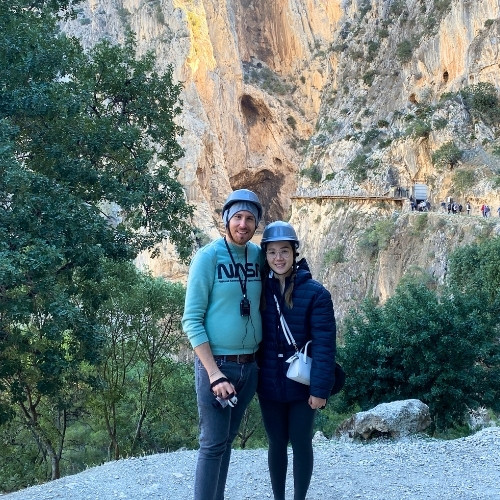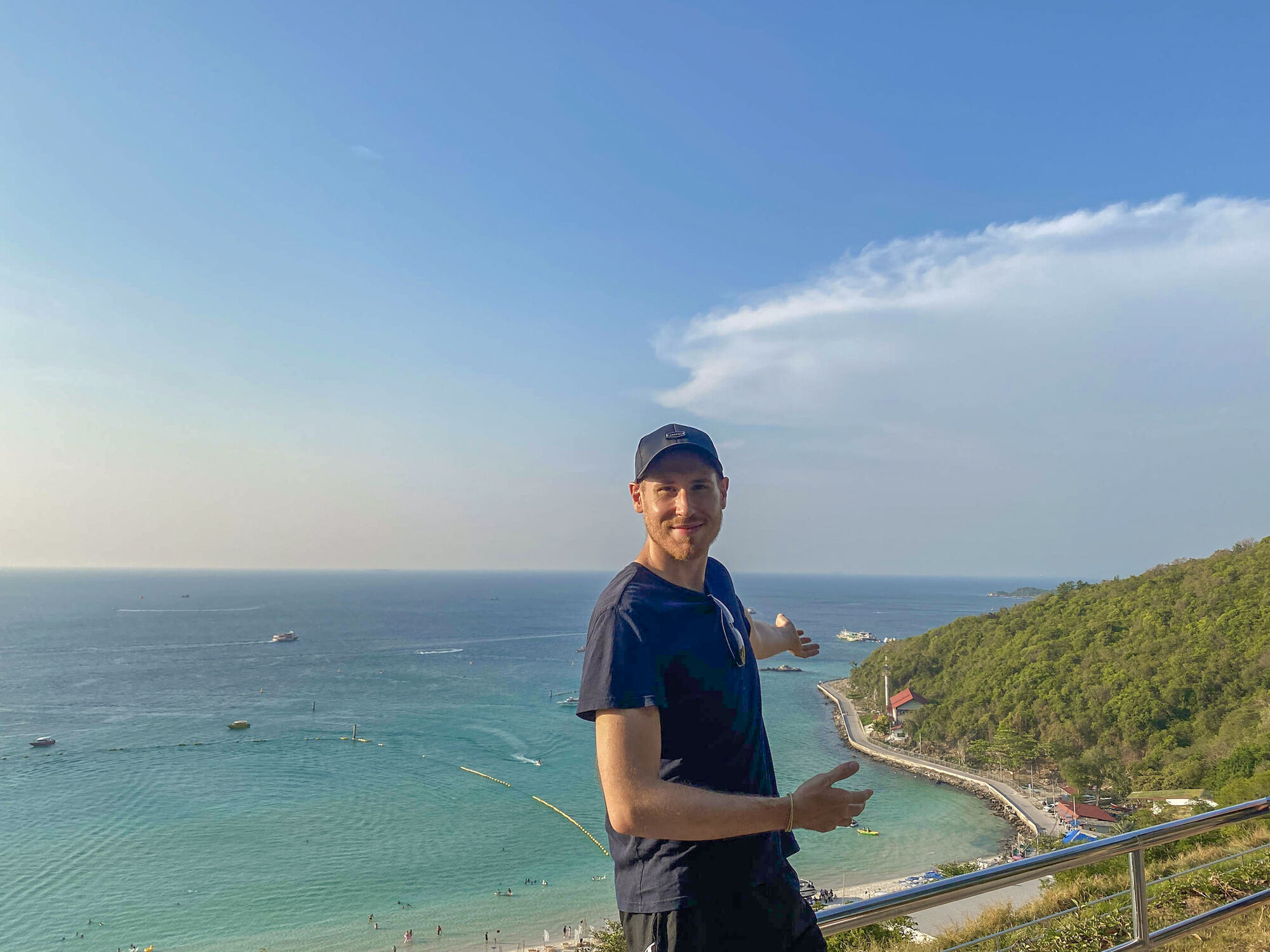Córdoba absolutely deserves a spot on any trip to Spain. It’s one of my favorite places to visit in Andalucia, full of history and much less crowded than other cities like Malaga or Granada. The catch? You really have to plan the best Cordoba itinerary possible.
Cordoba is known for a few factors. The Moorish heritage, Roman bridges, and flower-filled courtyards.
It’s a city that’s a little hard to describe but it’s pretty much a mix of white villages and a bigger city, with a touch of details that’ll remind you of Granada. If that make sense?
You might only have one day in Cordoba but that doesn’t mean you can’t still see the best of it. No question about it, visiting Cordoba is time well spent. Here’s the best itinerary you can plan!
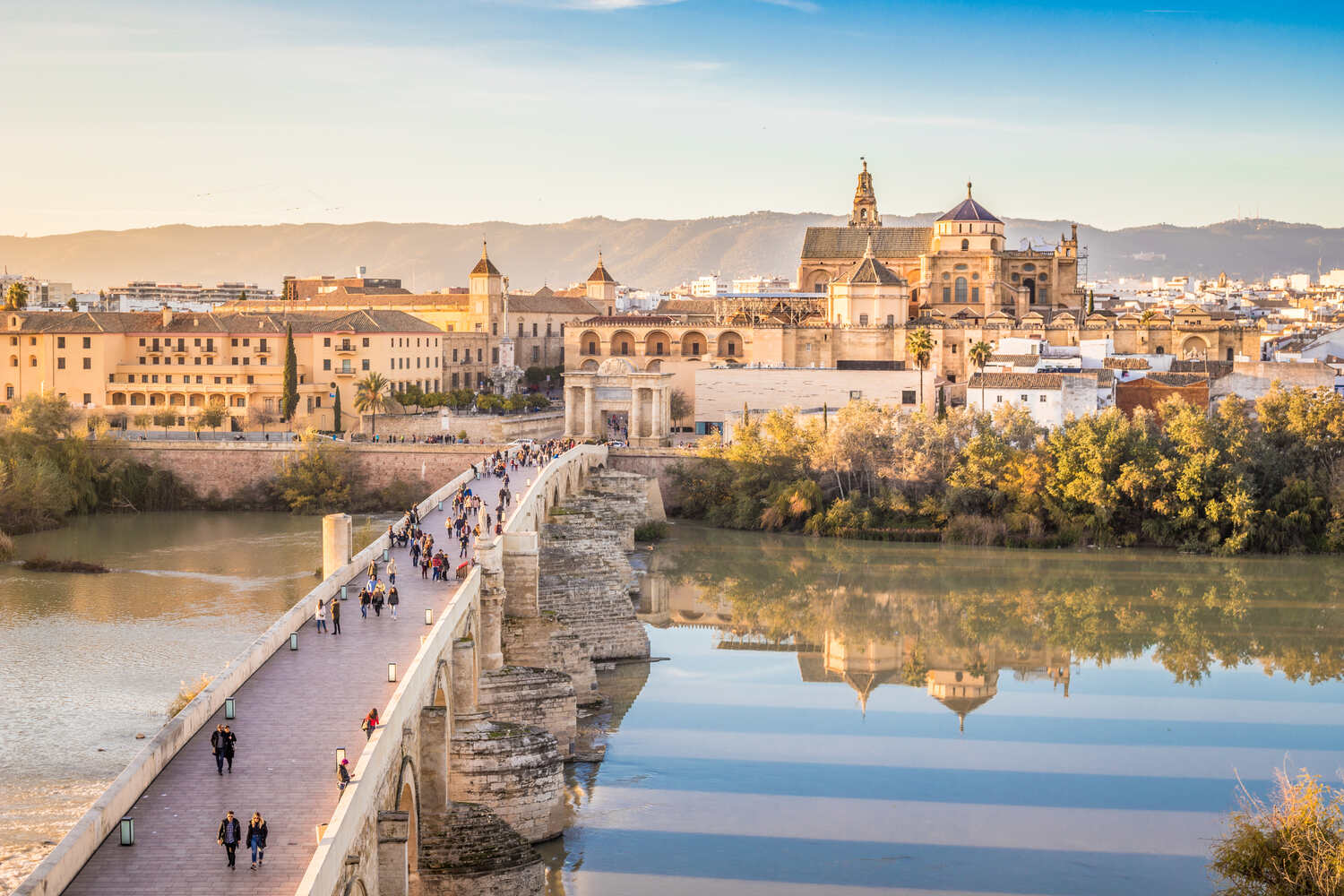
How to Prepare for a Cordoba Itinerary
Before we talk about the full itinerary for Cordoba, let me cover a few questions that you might find helpful when visiting. I wish I knew those the very first time I visited Andalucia!
Let’s quickly talk about getting to Cordoba, the best time to visit, if a day in Cordoba is enough, etc.
How to Get to Cordoba?
The fastest way to get to Córdoba is by high-speed AVE train. It’s about 45 minutes from Seville Santa Justa Train Station, just under two hours from Madrid-Puerta de Atocha station, and around an hour from Málaga-María Zambrano station.
To be fair, trains in Spain are mostly on time and I never had big issues anywhere. Plus, it’s quite clean, generally speaking.
If you’re on a budget, buses take longer but usually cost less. I don’t really recommend them but that’s an option if you travel cheap.
Lastly, you could also rent a car, which is really cheap in Andalusia. This is good especially if you want to visit nearby towns and plan to do a road trip around southern Spain. If time is tight though, the train is the clear winner.
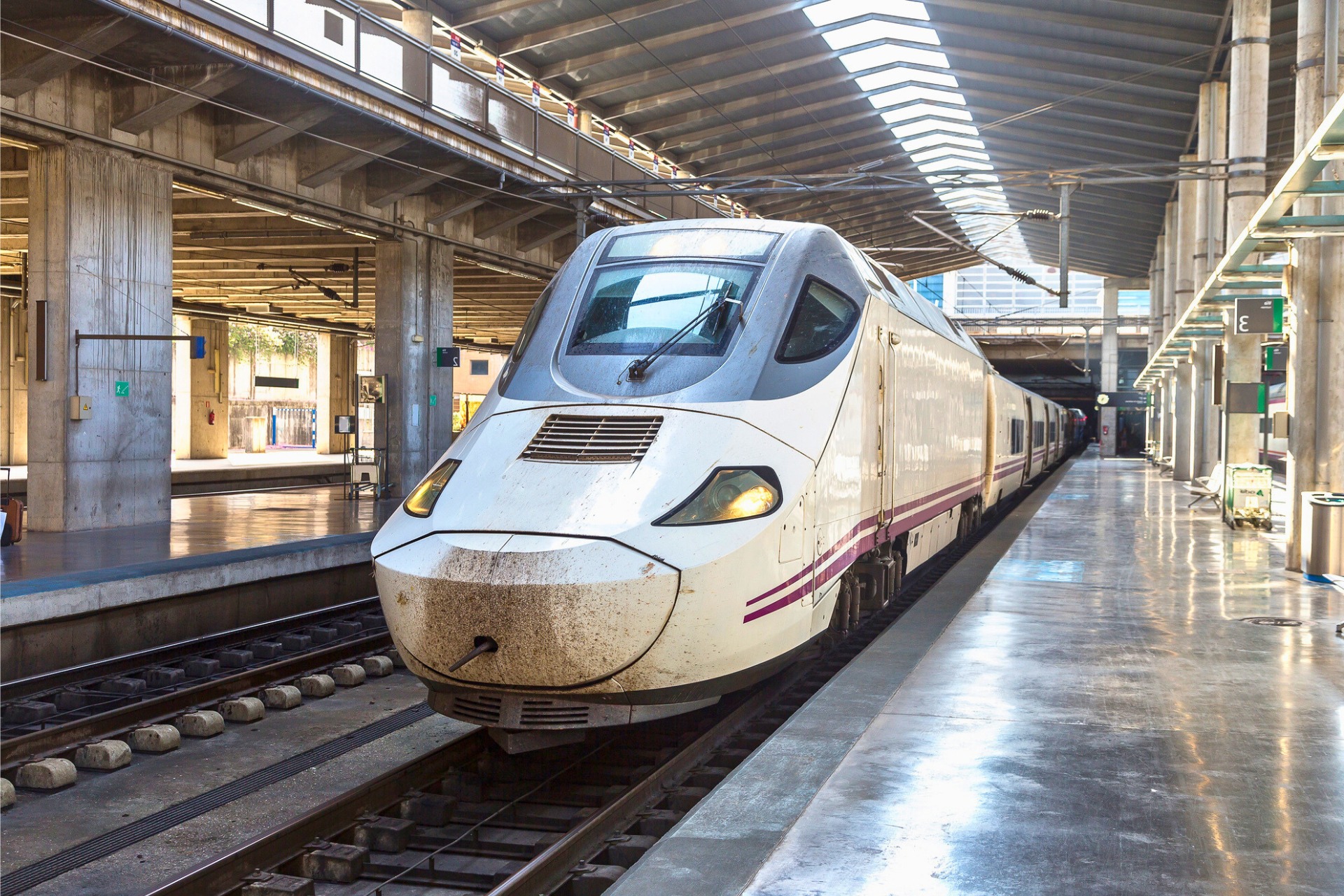
What is the Best Time to Visit Cordoba?
Let’s not beat around the bush: Summers in Cordoba are brutal, and it’s not uncommon for temperatures to reach 45 degrees Celsius.
For this reason, spring and early fall are much better for walking around comfortably. May is a special time to visit because of the Patios Festival, when locals open their beautifully decorated courtyards to the public.
There’s also the Feria de Córdoba in late May, bringing music, dancing, and a full-on festival atmosphere. Winters are mild but come with shorter days, so keep that in mind, especially if you only have a day in Cordoba.
Is One Day in Cordoba Enough?
Cordoba is a relatively small city, and you can cover the highlights in a day. You can easily fit in the Mezquita-Catedral, Alcázar, a walk through the Jewish Quarter, a quick stop at the Roman Bridge, and an amazing lunch.
That being said, I recommend spending the night here and see a live flamenco show in the evening before leaving the day after.
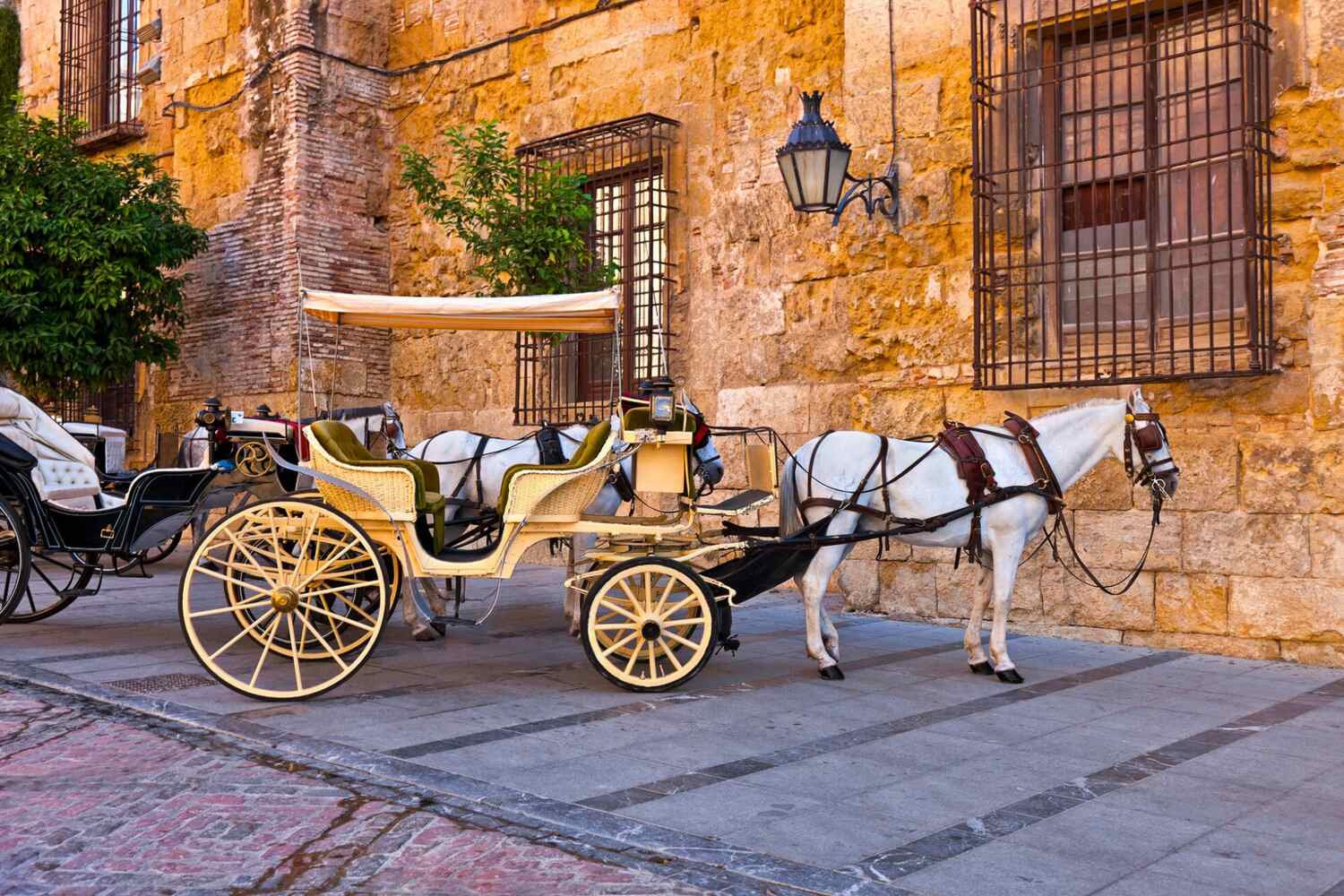
Ultimate 1-Day Itinerary for Cordoba
Now that we talked about the essentials, let’s finally get into this itinerary. We’ll start with the Mezquita-Catedral, then head over to the Roman Bridge and Jewish Quarter, and then? Surprise! Read on to know all the details!
Morning: Visit the Mezquita-Catedral
No surprises here—the Mezquita-Catedral is the spot to visit in Córdoba. Originally built as a mosque in 785 AD under Abd al-Rahman I, it was later expanded by Moorish rulers before being turned into a cathedral in 1236 after the Christian Reconquista.
What you get is an unreal mix of Moorish and Gothic architecture—rows of horseshoe arches leading to a massive Christian nave smack in the middle. Easily one of the most unique landmarks in Spain, maybe even Europe.
When you step inside, take your time. Let your eyes adjust to the massive space. The red-and-white arches stretch endlessly, making the whole place feel surreal. Walk towards the Mihrab, the original prayer niche covered in stunning gold mosaics—it’s one of the most important Islamic architectural pieces in Spain and still looks incredible.
Then, check out the cathedral section, where the shift from Moorish to high Gothic architecture is almost shocking. It’s like two completely different worlds in one place.
A few details I found fascinating:
- The massive altar, packed with intricate details.
- The carved wooden choir stalls—not what you expect inside an old mosque.
- The pipe organ, adding to the cathedral’s completely different vibe.
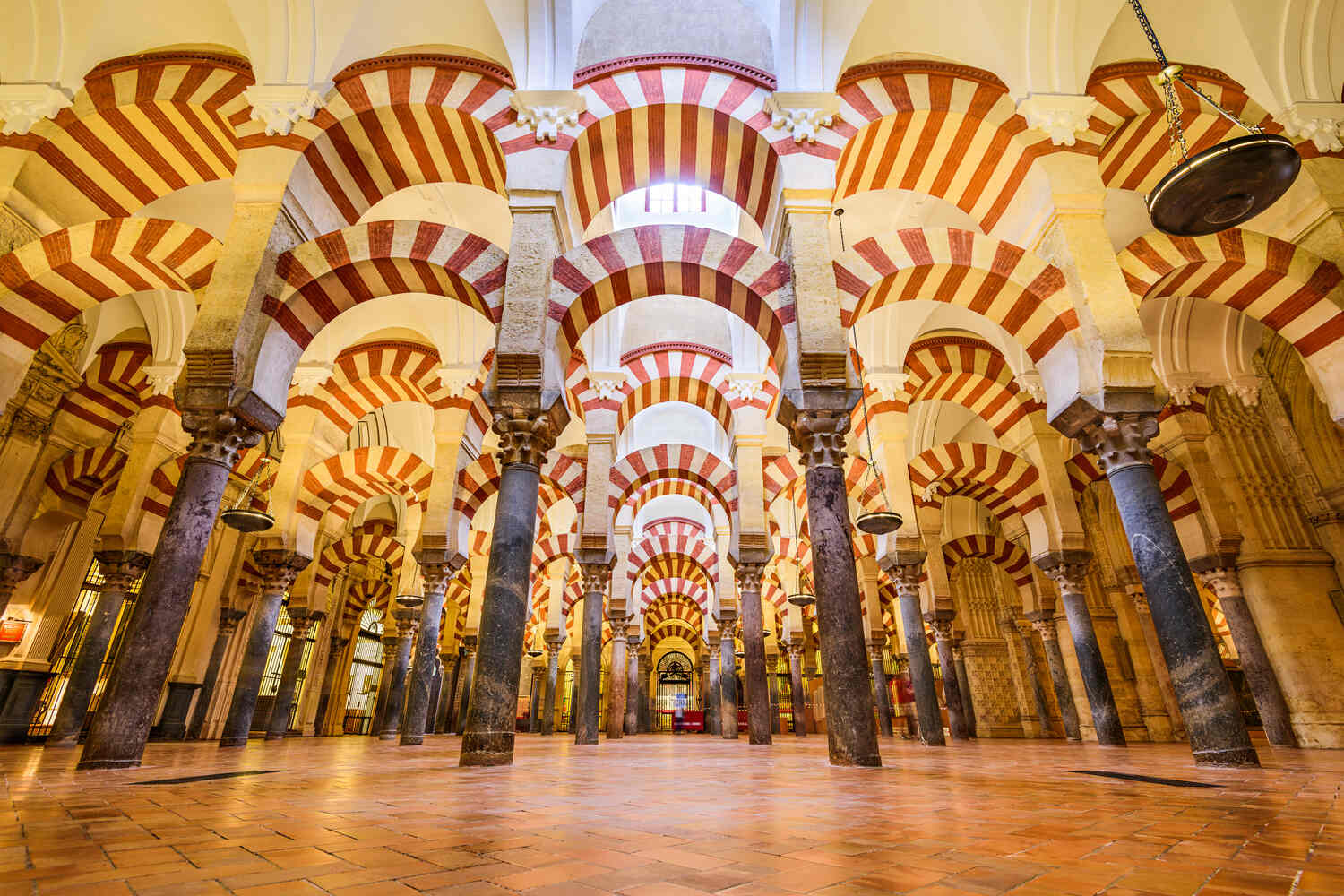
If you’re up for a view, climb the Torre del Alminar—once a minaret, now a bell tower. The stairs are steep, but the view from the top is worth it. It’s an extra €3, and only a limited number of people can go up at a time, so booking ahead is smart.
Before you leave, take a break in the Patio de los Naranjos, the courtyard just outside. It’s shaded with orange trees (you can’t eat them, though) and has fountains—perfect for cooling off, especially in summer.
Pro tip: If you didn’t grab breakfast, now’s the time. Hit up a nearby café for a coffee and tostada with olive oil and tomato—a simple but classic Andalusian start to the day.
The opening times vary during the year:
- From November to February: Monday to Saturday, 8.30 AM to 6.00 PM
- From March to October: Monday to Saturday, 10.00 AM to 7.00 PM
- Sundays and religious days: 8:30 to 11:30 AM and 3:00 to 7:00 PM
Money-saving tip: Get there between 8:30 and 9:30 AM on weekdays—entry is free, but keep in mind that no sightseeing tours are allowed during that time since it’s mass.
The best plan? Arrive right when paid entry starts at 10:00 AM to beat the midday crowds. Most people spend 1.5 hours inside, but if you take your time, two hours won’t feel like too much.
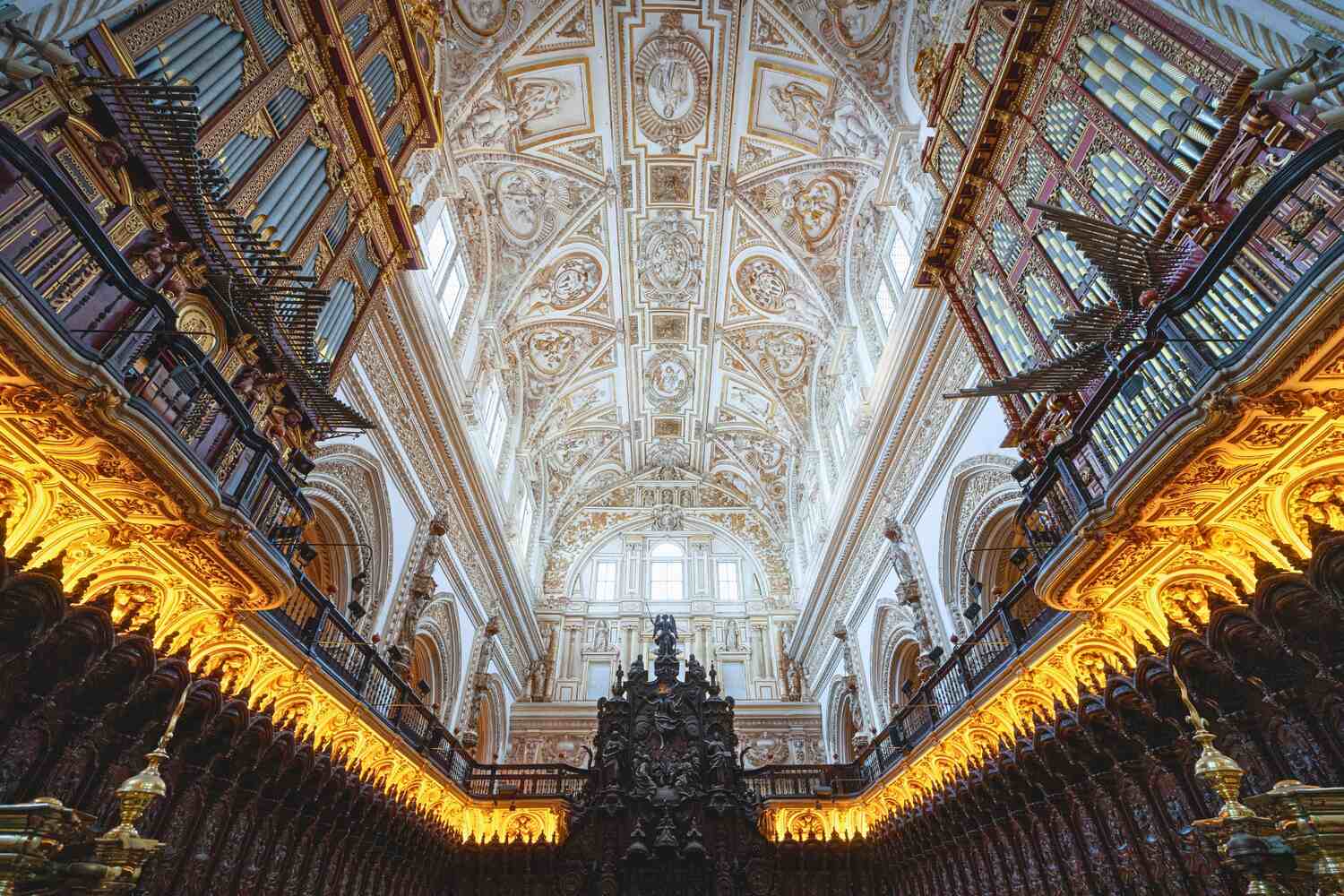
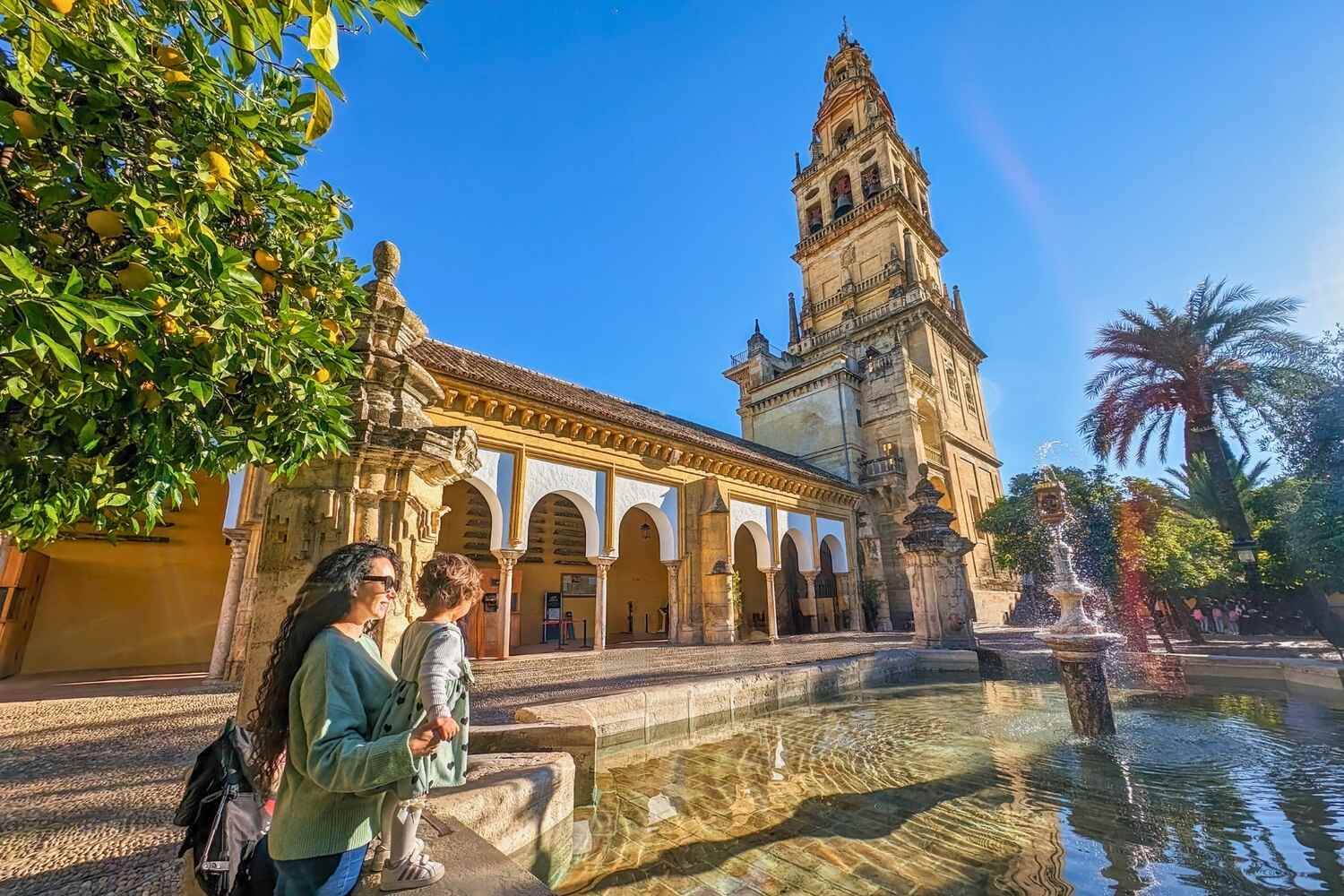
Walk on the Roman Bridge of Córdoba
From the Mezquita, walk straight down to the Puente Romano, the ancient Roman bridge stretching across the Guadalquivir River. This thing has been standing for nearly 2,000 years, though most of what you see today is from a 10th-century Moorish reconstruction.
The best views? Right in the middle of the bridge, especially in the late afternoon when the light hits just right. Just a heads-up—it’s one of the busiest spots in Córdoba, so expect crowds unless you come early in the morning for sunrise.
At the far end of the bridge, you’ll see the Calahorra Tower, a medieval fortress that now houses the Museum of Al-Andalus. If you’re into history, it’s worth checking out—it gives you a glimpse into Córdoba’s golden age, back when it was one of the most advanced cities in Europe.
Short on time? You can just climb to the rooftop for the views or skip it altogether. Honestly, while the views are great, they don’t beat the ones from the Mezquita’s bell tower.
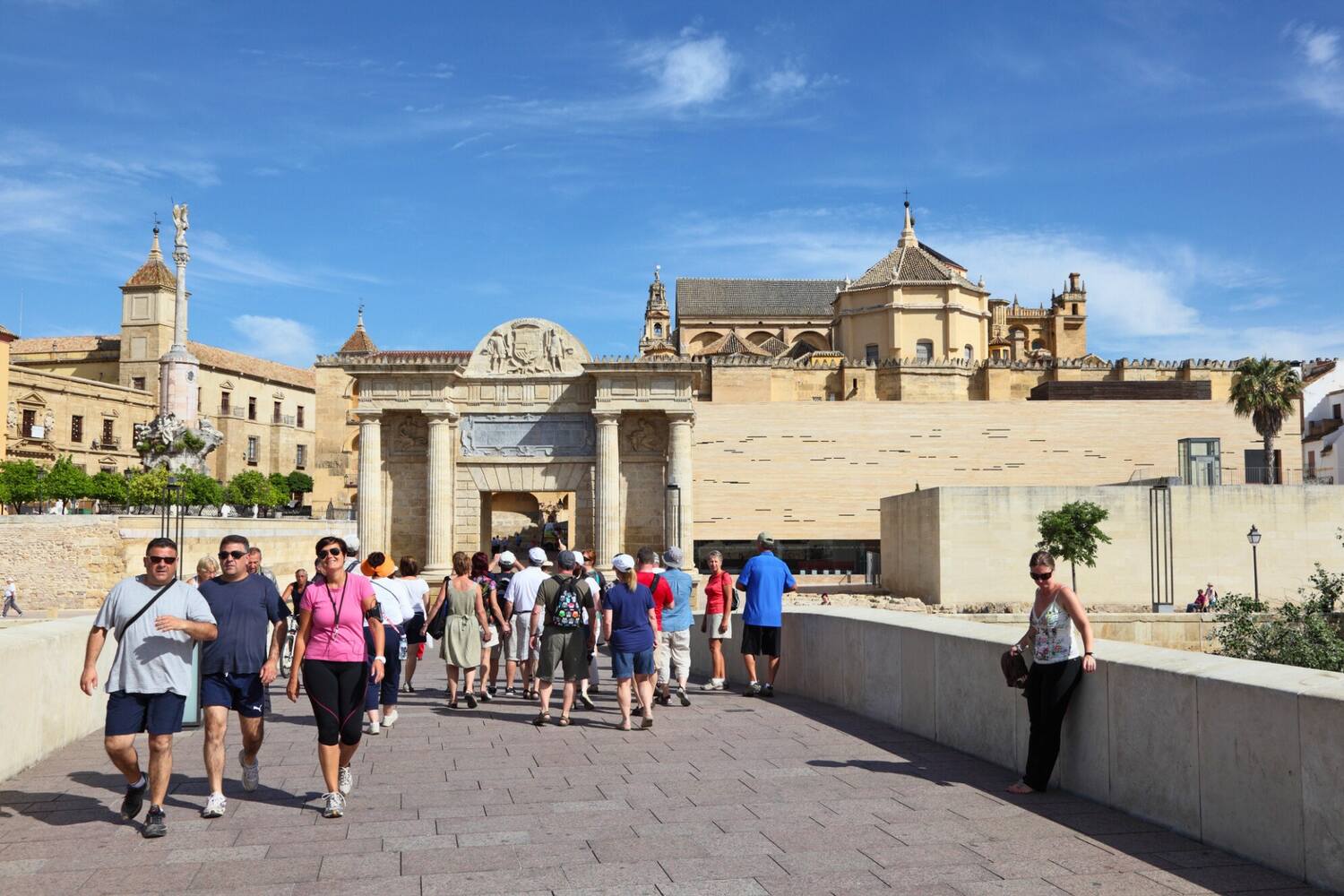
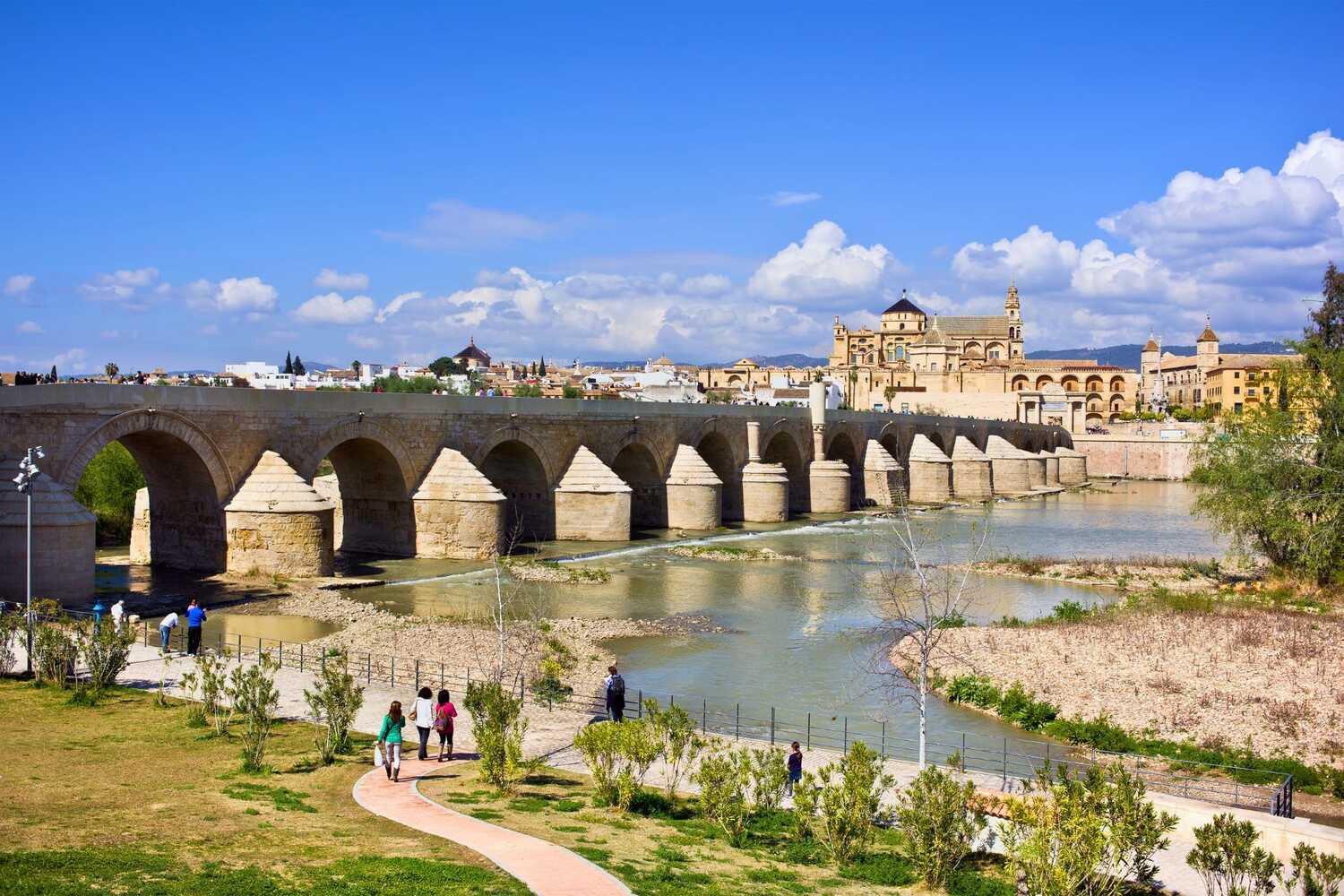
Late morning: Explore the Jewish Quarter
After crossing the bridge, head back toward La Judería, Córdoba’s old Jewish Quarter. This area is straight-up postcard material—whitewashed walls, colorful flower pots, and tiny winding streets. It reminded me of Spain’s white villages, and I loved every second of it.
Some of the streets are so narrow you can touch both walls with your arms stretched out. Getting lost is part of the fun here, so don’t worry too much about the map.
One stop you can’t miss? Calleja de las Flores—one of the most photographed streets in the city. It’s a small alley packed with potted flowers, balconies covered in greenery, and at the end, a perfect framed view of the Mezquita’s bell tower.
A heads-up, though—it gets crowded, so if you want a quiet moment, go earlier in the day.
Not far from there, check out the Synagogue of Córdoba, one of only three medieval synagogues left in Spain. Built in 1315, it’s tiny but packed with history, featuring intricate Hebrew inscriptions and Mudejar-style designs. Entry is free for EU citizens and just a couple of euros for everyone else, so it’s worth a quick stop.
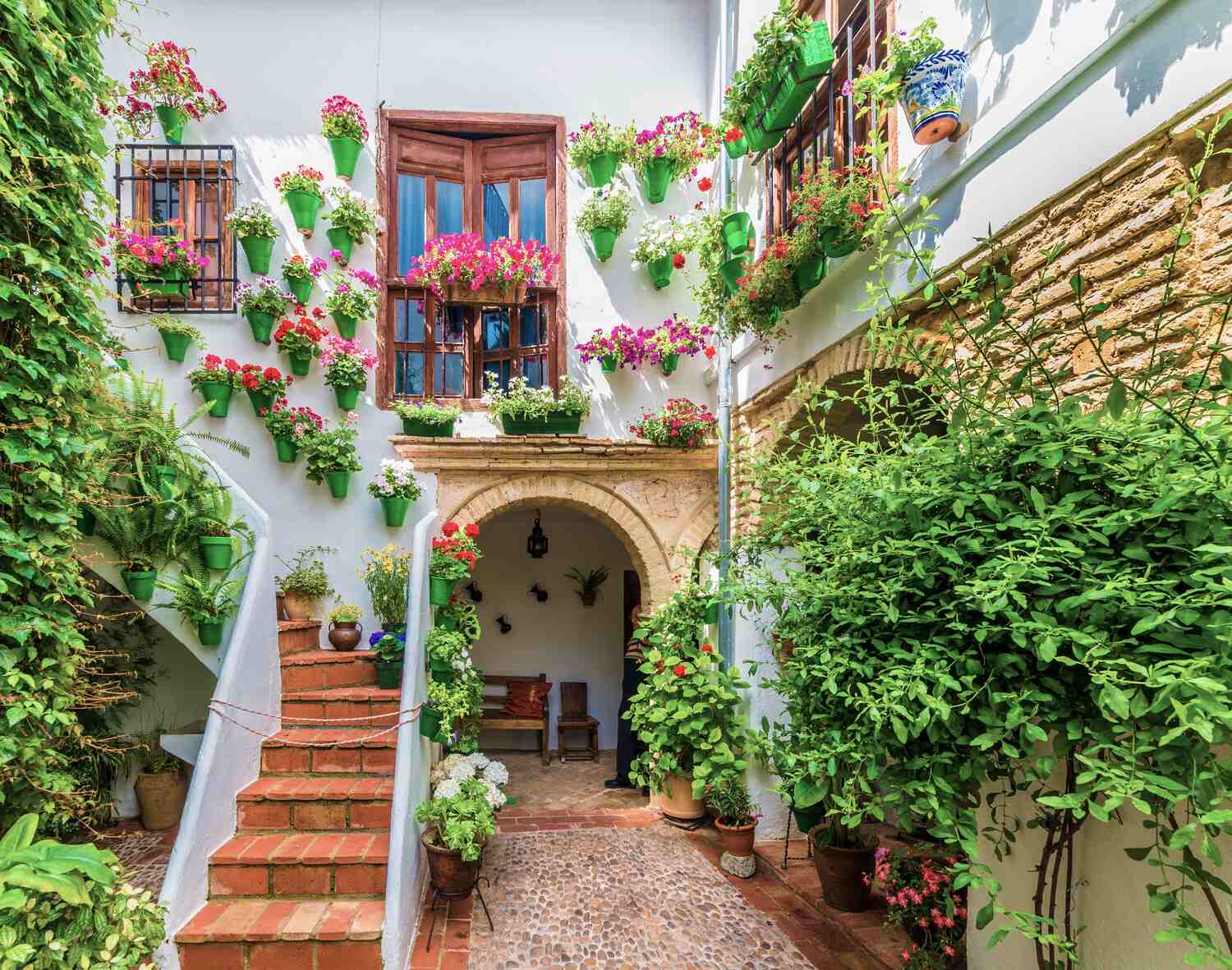
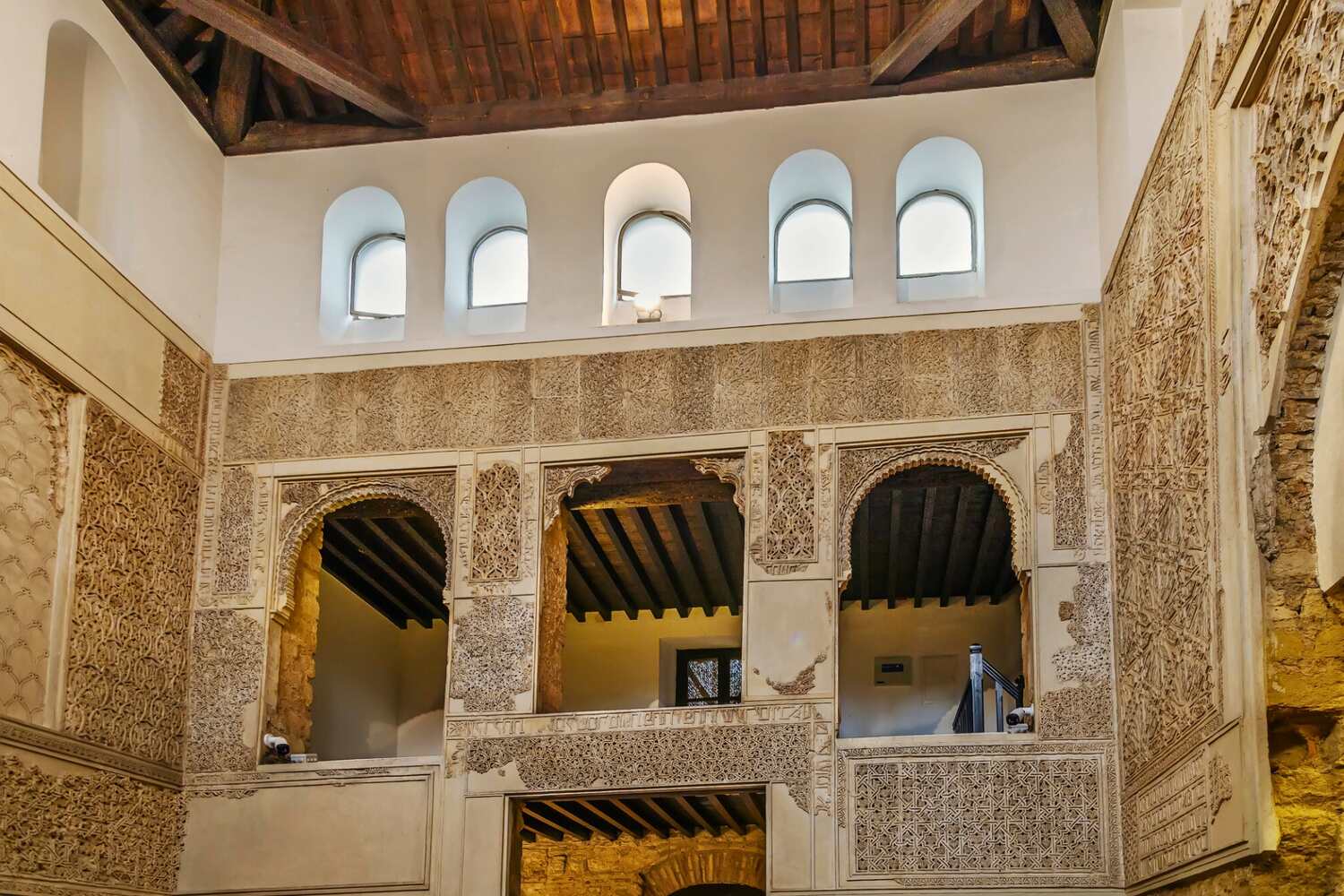
Lunch: Traditional Cordoban food
It goes without saying, you’ve probably worked up an appetite by now. And the best way to eat in Córdoba is to go slow and enjoy it.
The city is known for salmorejo (my favorite dish in Andalucia so please do not skip it!), a thick, cold tomato soup that’s richer and creamier than gazpacho.
It’s usually topped with chopped hard-boiled egg and jamón ibérico. No doubt about it, the best dish for a hot day in this part of Spain.
Flamenquín is another nice dish. It’s basically a crispy, deep-fried pork roll wrapped around ham and cheese. It’s more filling so get that if you’re really hungry.
Another dish to try is rabo de toro. It’s oxtail stew, slow-cooked in red wine until the meat falls off the bone. It takes hours to prepare, and the best versions are at the old-school taverns where they have the same recipes as decades ago.
A lot of the best spots to eat are hidden in little plazas with outdoor seating, perfect for kicking back with a cold beer or a glass of Montilla-Moriles wine (Córdoba’s take on sherry). No need to rush: Personally, I really liked Casa Pepe de La Judería, great food at a fair price, so definitely check it out!
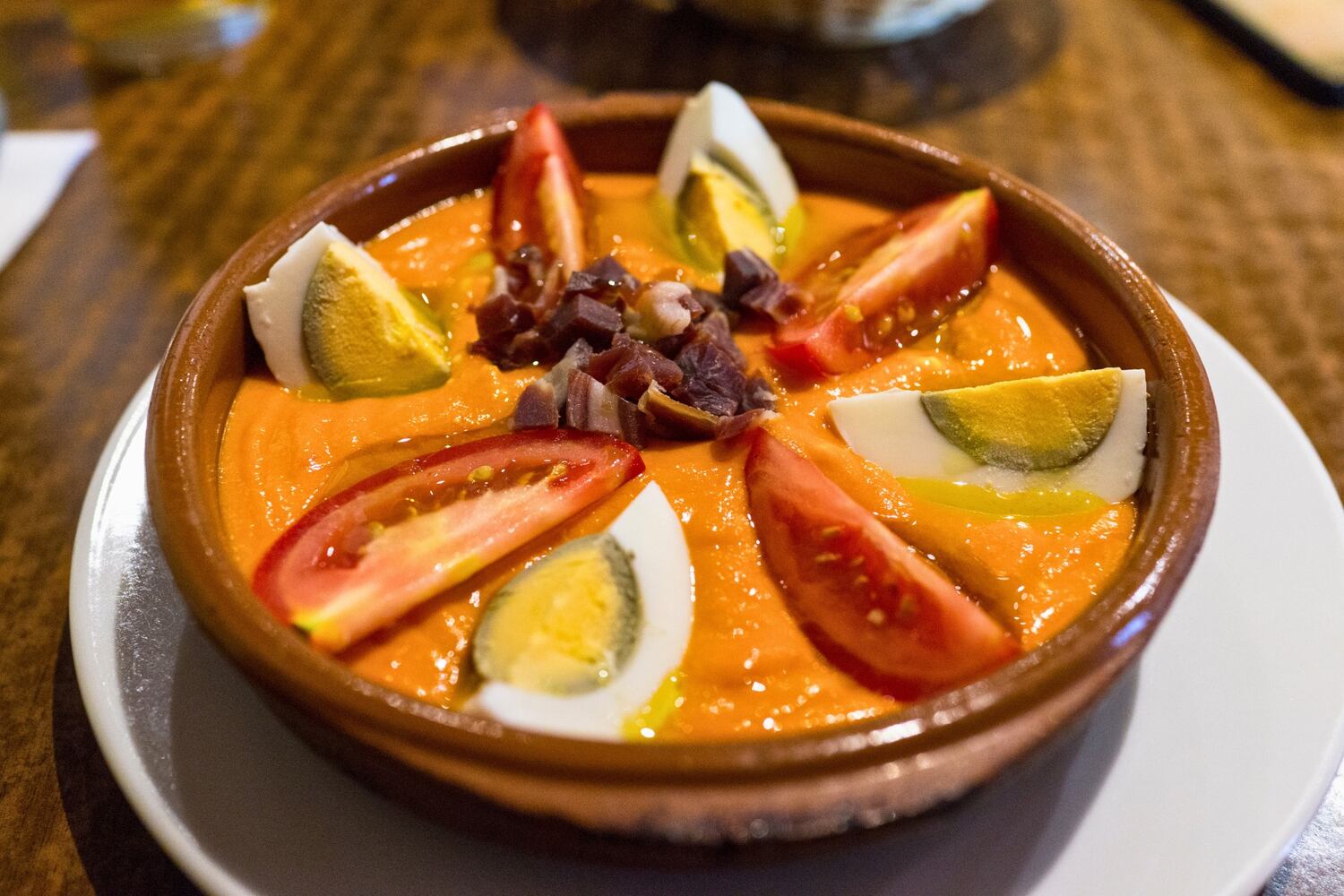
Afternoon: Alcázar de los Reyes Cristianos and Horse Carriage Ride
No question about it…the Alcázar de los Reyes Cristianos is another must when in Córdoba. This fortress-palace was built in 1328 under King Alfonso XI and served as a key residence for Catholic monarchs Ferdinand and Isabella.
In fact, they met here with Christopher Columbus in 1486, years before he set sail to the Americas. You’ll see the statue outside of their meeting, which is quite nice to see.
The real highlight for many is the tower climb – Yes, another climb and another viewpoint on this Cordoba itinerary, but it’s nice to see and who gets tired of those city views?
From the top, you’ll get one of the best panoramic views of the city, with the Mezquita-Catedral and the Guadalquivir River stretching out before you.
Once you’re back on the ground, take your time wandering through the gardens, which is quite nice especially in spring, when the flowers are in full bloom.
The Alcázar is open Tuesday to Sunday, 8:30 AM to 3:00 PM in summer and 8:30 AM to 8:00 PM the rest of the year. Entry is 5 euros. If you don’t want to waste time in line, buy your ticket in advance or get there early.
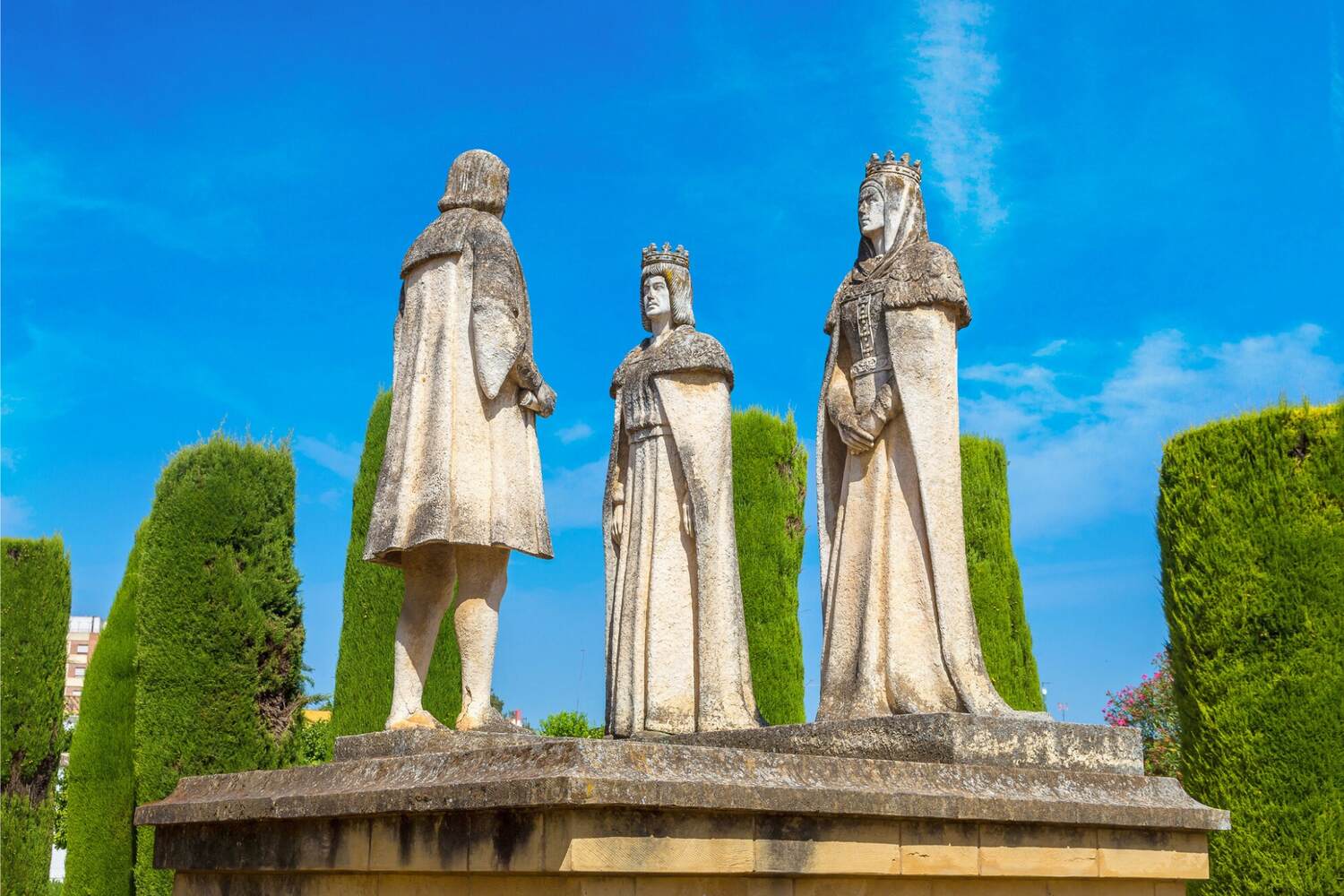
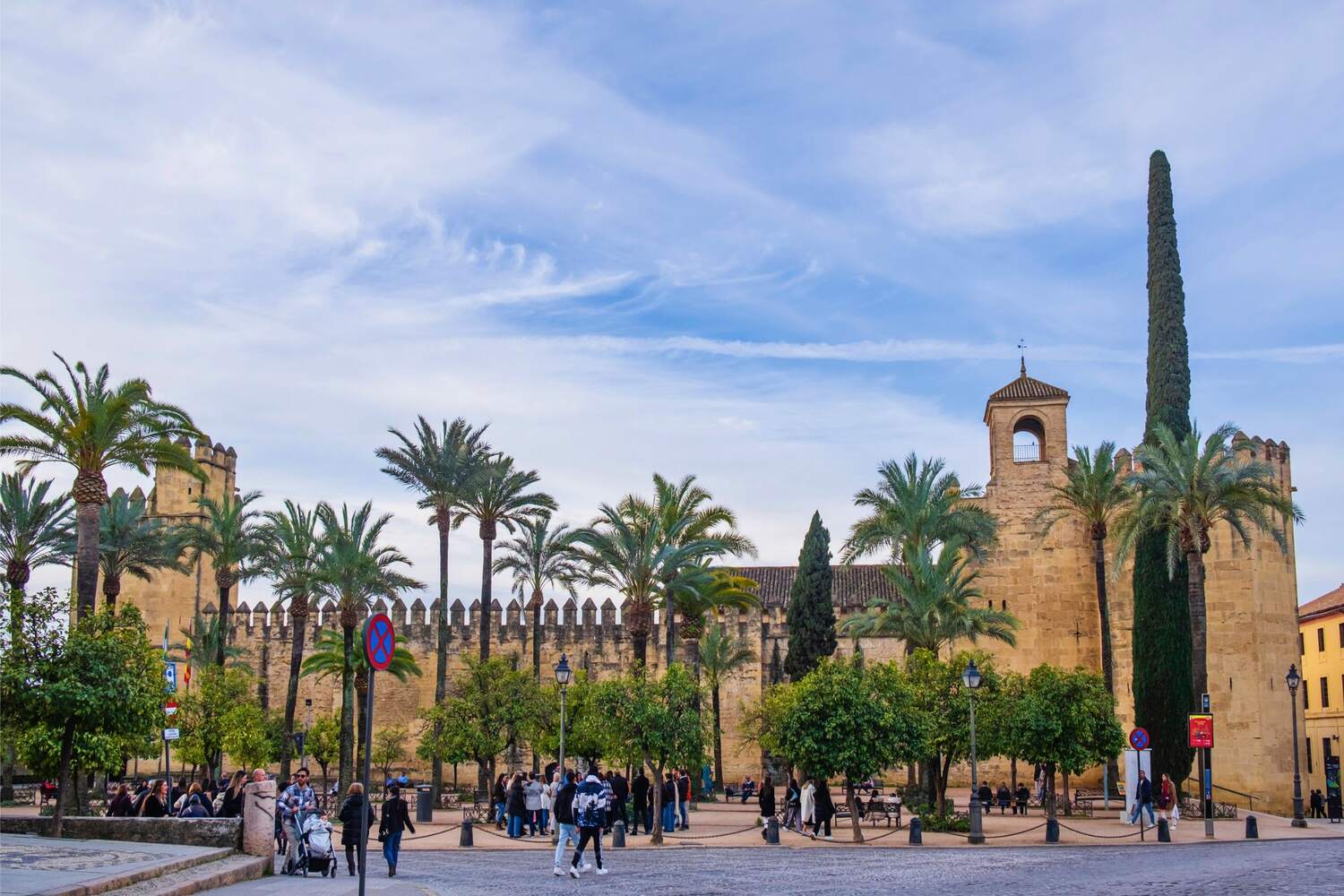
It’s time to slow down a bit. The perfect way to do that is going around town with a horse-drawn carriage!
The horse carriages go near the Alcázar and take you on a loop around the old town. You’ll pass the Mezquita, the Puente Romano, and Plaza de las Tendillas. No legwork, just the views, but trust me when I say it gives you a better perspective of the city. The rides cost about 45 euros and last 45 minutes (basically, one euro per minute).
Is it cheap? Well, for Andalucian standards, no, but it’s 100% worth it for sure.
After that, head to Plaza de la Corredera, the biggest plaza in Córdoba. It used to be for bullfights and executions (yes ok, not the happiest past) but now it’s cafés and souvenirs.
Grab a drink here, which is nice before heading back to Seville or getting ready for dinner. What an awesome Cordoba itinerary it’s been so far!
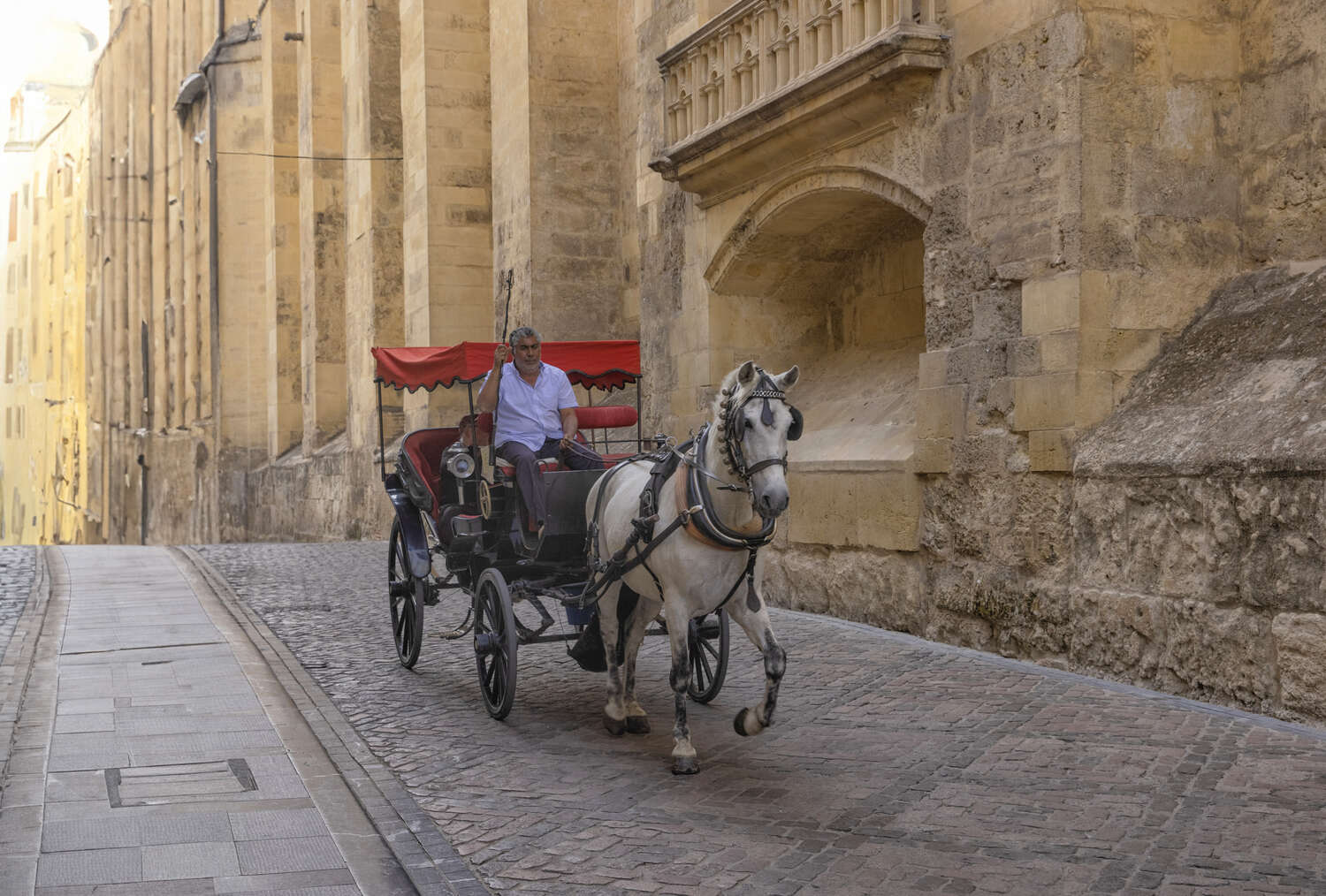
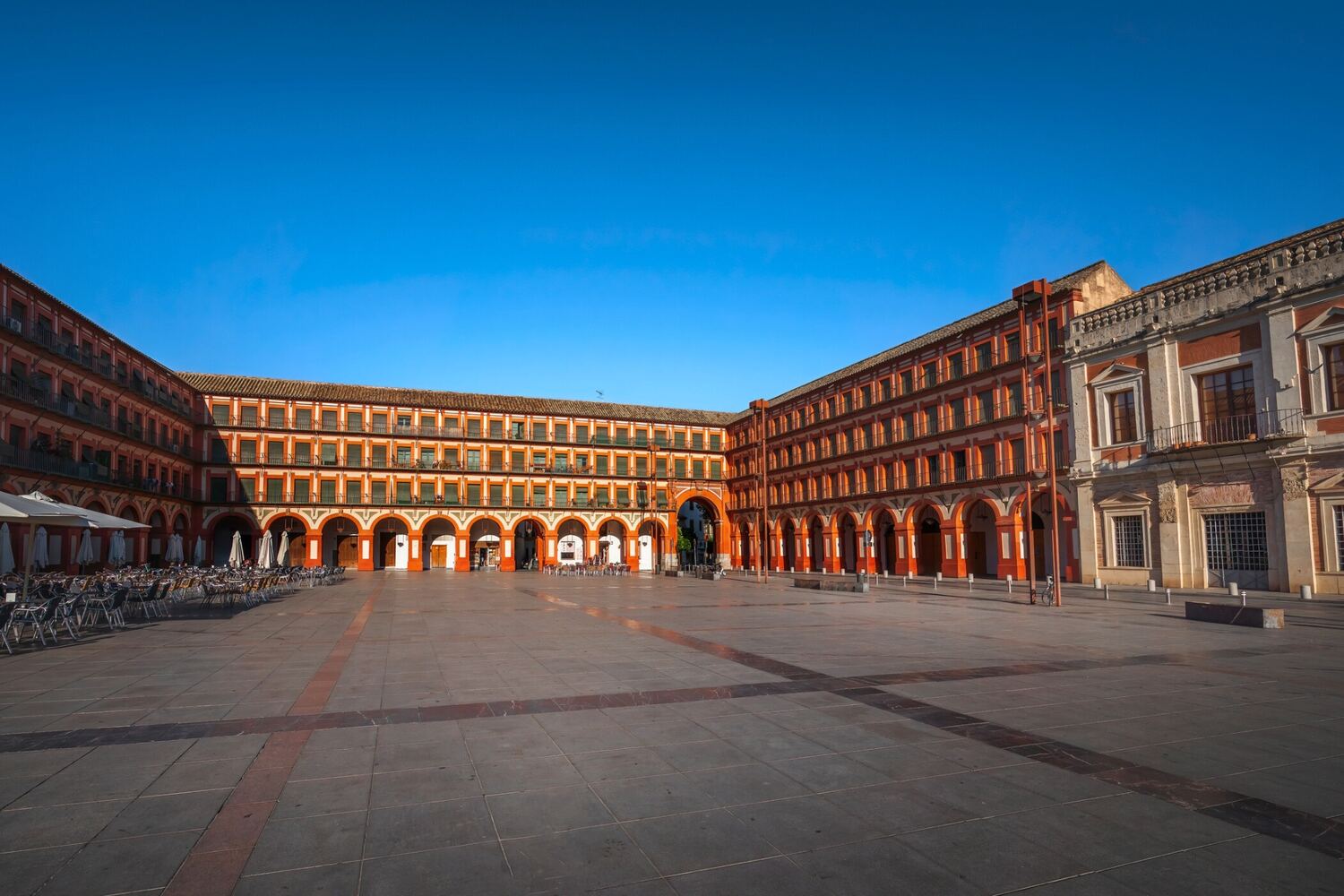
Evening: Flamenco Show (If You Stay Longer)
The fact is, if you’re in Spain, you have to experience flamenco at least once. And you guessed it, Córdoba is one of the best places to do it.
To be fair, this isn’t just music and dance. It’s raw, emotional, and completely hypnotizing when done right. The best way to watch it is at a traditional taberna, where the stage is close, and the performers put everything into their singing, guitar playing, and footwork.
We personally went to a live Flamenco show in Granada and Cordoba, and both were nice, just different.
The best place is probably Tablao El Cardenal, which is famous for hosting some of the best flamenco artists in the country. Shows usually start around 9:00 PM, and it’s best to book in advance, especially during the busier months.
After the show, take a slow walk down toward the Guadalquivir River. No surprises here, the Puente Romano looks completely different at night.
If you’re not ready to head back yet, stop by Sojo Ribera, a stylish rooftop bar right by the river, for one last drink. The view of the illuminated city skyline is worth it, and the relaxed atmosphere makes it a great place to wrap up the night in Cordoba.
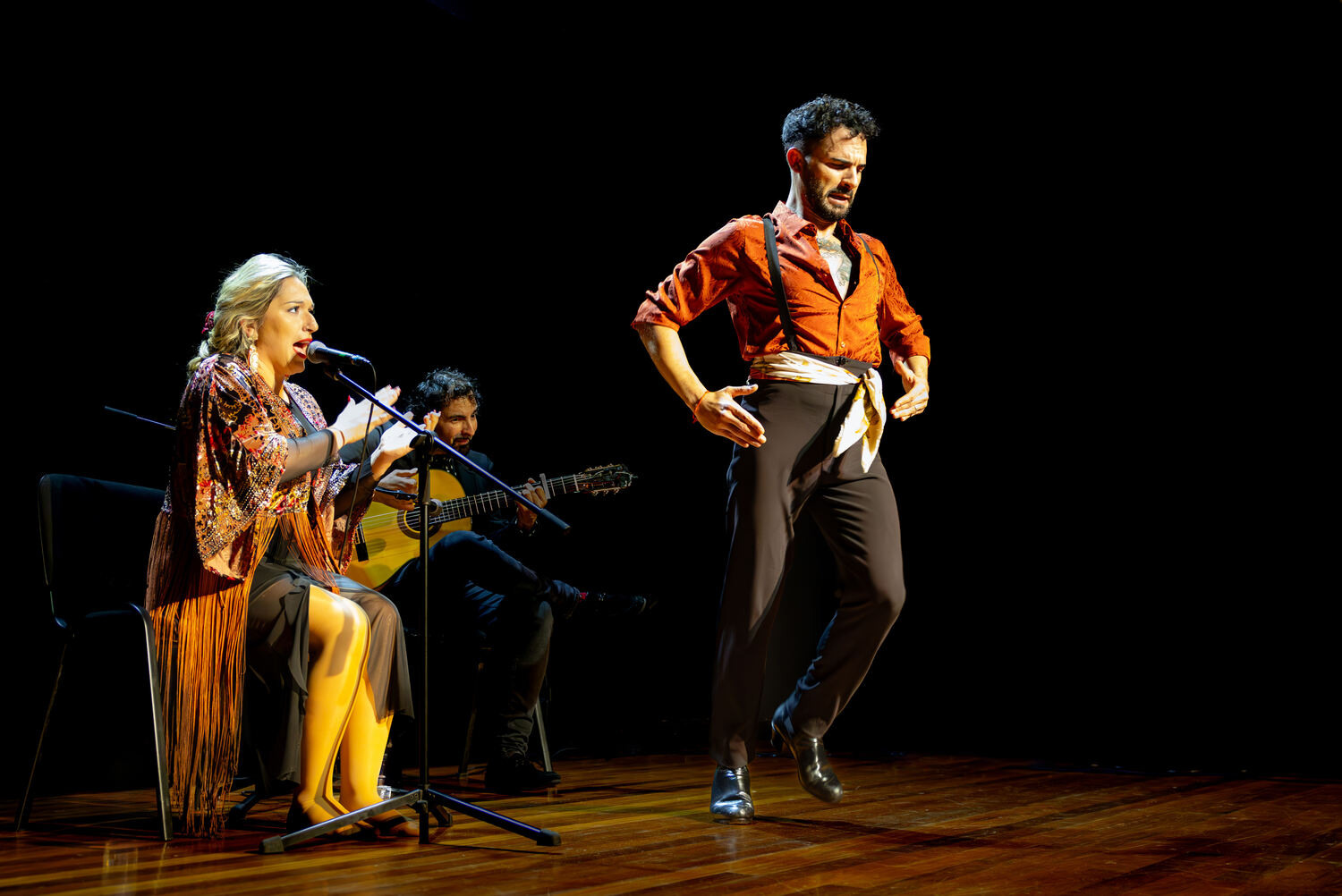
FAQ When Visiting Cordoba
I couldn’t finish this Cordoba itinerary without answering some questions that first-timers always have (honestly, I had them too when coming at first). Here are a few elements to keep in mind.
Can you Combine Cordoba with Another City in one day?
Yes it’s doable, but you’d be rushing. Some people add a quick trip to a nearby town like Medina Azahara or Montilla, known for wine. However, Cordoba has so much to see that stuffing another stop might leave you exhausted.
If you have two days, that’s a better time frame for juggling multiple spots without feeling like you’re running everywhere. On top of that, you’ll have enough time to enjoy Cordoba fully if you don’t stop anywhere else.
What to Pack for a Day Trip to Cordoba?
First of all, bring comfy shoes because you’ll walk on uneven streets. A hat, sunglasses, and sunscreen help if you’re out in strong sun, especially from late spring through early fall.
Make sure to pack a light jacket in cooler months, just in case. Keep some cash on hand for souvenirs or small bites. Yes, most places accept credit cards in Spain, but smaller places or cafes might not.
You don’t need much else, but always keep your phone or camera charged to capture that perfect shot.
Conclusion
Córdoba squeezes centuries of history, culture, and flavor into a walkable city that never feels overwhelming. Safe to say, it’s an easy city to fall for. One day is enough to see the highlights, but if you find yourself craving more, Córdoba will always be worth a return trip.
Don’t get me wrong, I do love southern Spain in general, and every place is different. But Cordoba will always have a special place in my heart. I hope you did enjoy this itinerary and that you’ll have an amazing time in town!

